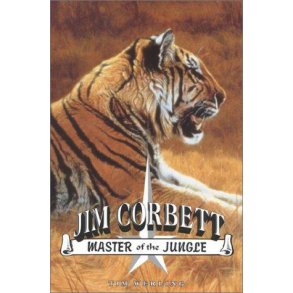2009
En håndplukket samling af de mest spændende, uhyggelige og overraskende beretninger om jagt på tigre i Indien. Den ældste beretning i bogen er fra 1788, den nyeste er fra 1966, hvor det er selveste Robert Ruark, der fører pennen. Her er både den stille pürschjagt og anstandsjagt fra "machan" og de pompøse drivjagter, hvor jægerne jagede fra ryggen af elefanter, og hvor et stort klapperopbud drev tigrene frem.
325 sider, indb
_____________________________
Tigers were hunted at one time all over Asia, but nowhere were tigers hunted more fervently than in India. This great cat was synonymous with India itself. Both Indian royalty and simple villagers alike hunted tigers for centuries and developed a complex set of rituals and methods that varied based on culture and region. But it was the British who became the greatest tiger hunters. Their pursuit of ?field sports,? or shikar, was unparalleled even by India?s traditional rulers, the Moguls and maharajas, who invented the sport. The British shot tigers in more ways and in more locales and wrote more on their hunting exploits than any people in history. All told, about forty thousand tigers were bagged and hundreds of tiger-hunting books and articles published between 1788 and 1970. It was during this period that the?golden era of tiger hunting?occurred, and it was a time of extraordinary hunting.
Relive the excitement of the British Raj (1858?1947) with all the pomp and ceremony in those haughty days of Empire when the world seemed without limits. Feel the danger of hunting tigers from howdahs precariously perched on the backs of elephants in open terrain, and suffer the anxiety of waiting from treetop platforms, or machans, in wooded areas for these sly predators to appear. Follow the authors as they track after man-eaters from horseback and on foot, not knowing if their next step will be their last.
The tiger was a political and religious symbol throughout India because it was bold and adaptive, as well as beautiful and mysterious, and Tobias Lanz has carefully selected stories in this gripping anthology to give a complete picture of what Indian tiger hunting was like. From the earliest story, Essays on Sporting (1788), by William Blane to the last by that great writer/hunter Robert Ruark (1966), these stories are sure to keep you on the edge of your seat.
En håndplukket samling af de mest spændende, uhyggelige og overraskende beretninger om jagt på tigre i Indien. Den ældste beretning i bogen er fra 1788, den nyeste er fra 1966, hvor det er selveste Robert Ruark, der fører pennen. Her er både den stille pürschjagt og anstandsjagt fra "machan" og de pompøse drivjagter, hvor jægerne jagede fra ryggen af elefanter, og hvor et stort klapperopbud drev tigrene frem.
325 sider, indb
_____________________________
Tigers were hunted at one time all over Asia, but nowhere were tigers hunted more fervently than in India. This great cat was synonymous with India itself. Both Indian royalty and simple villagers alike hunted tigers for centuries and developed a complex set of rituals and methods that varied based on culture and region. But it was the British who became the greatest tiger hunters. Their pursuit of ?field sports,? or shikar, was unparalleled even by India?s traditional rulers, the Moguls and maharajas, who invented the sport. The British shot tigers in more ways and in more locales and wrote more on their hunting exploits than any people in history. All told, about forty thousand tigers were bagged and hundreds of tiger-hunting books and articles published between 1788 and 1970. It was during this period that the?golden era of tiger hunting?occurred, and it was a time of extraordinary hunting.
Relive the excitement of the British Raj (1858?1947) with all the pomp and ceremony in those haughty days of Empire when the world seemed without limits. Feel the danger of hunting tigers from howdahs precariously perched on the backs of elephants in open terrain, and suffer the anxiety of waiting from treetop platforms, or machans, in wooded areas for these sly predators to appear. Follow the authors as they track after man-eaters from horseback and on foot, not knowing if their next step will be their last.
The tiger was a political and religious symbol throughout India because it was bold and adaptive, as well as beautiful and mysterious, and Tobias Lanz has carefully selected stories in this gripping anthology to give a complete picture of what Indian tiger hunting was like. From the earliest story, Essays on Sporting (1788), by William Blane to the last by that great writer/hunter Robert Ruark (1966), these stories are sure to keep you on the edge of your seat.

